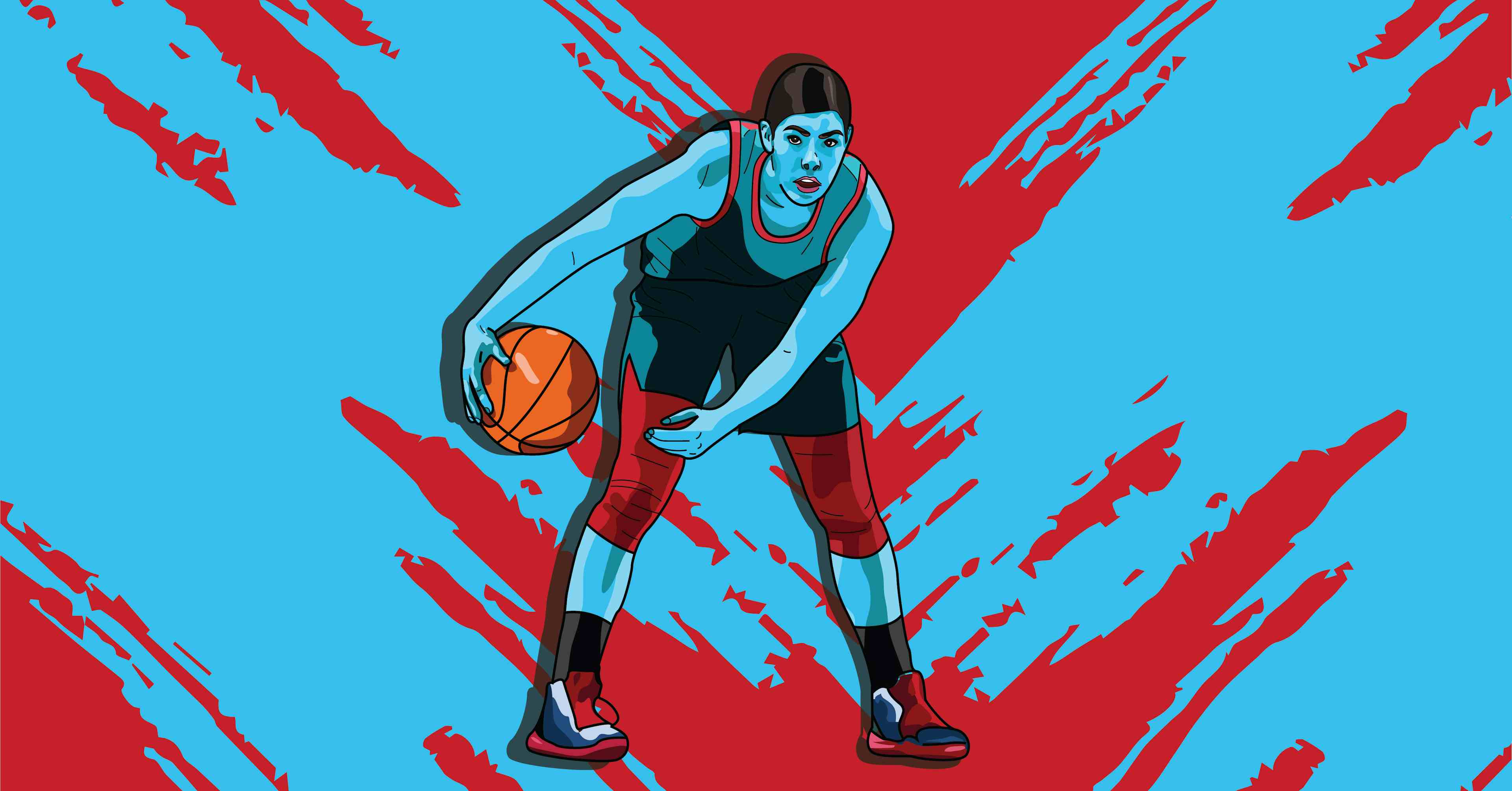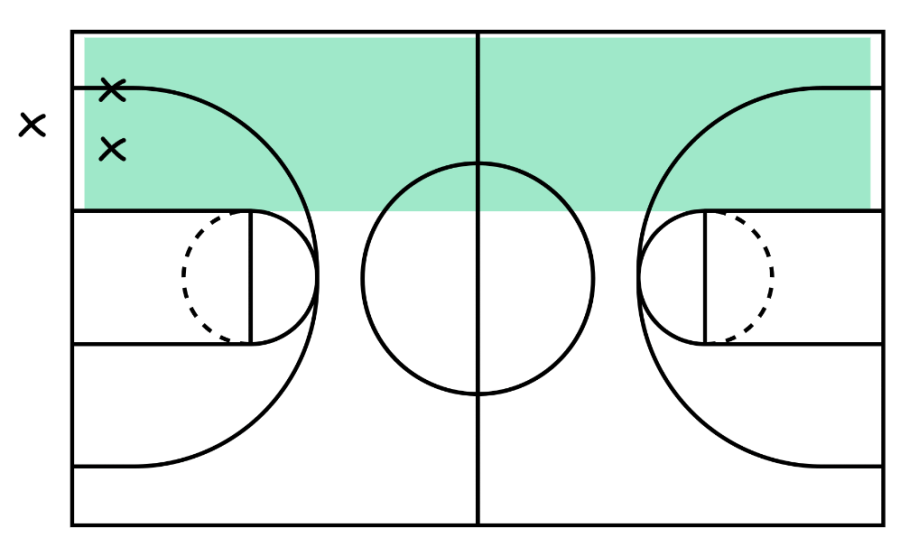

OK so at some point it’s going to happen to you: the dreaded trap. Whether you’re bringing the ball up through a full-court press in the last few minutes of the game, or it gets sprung on you after you’ve crossed half court, you’re going to be forced to make instant decisions about how to break a trap. No big deal, it happens to everyone, you’ve done nothing wrong – and you got this! So today we’ll prepare you with some ways to defeat this sneaky effective defense, a few examples of NBA and WNBA players navigating traps well (and poorly!), and some drills to practice handling the pressure. So say goodbye to turnovers and hello to taking advantage of a trap for an easy bucket!
First things first: If you’ve already picked up your dribble be sure to secure the ball. Don’t hold it over your head. If your dribble is still live, beware of where you are on the court, try to get to open space rather than heading toward a corner. Now here are some options:
One of the most effective ways to get through a trap is to hold the ball around waist-level and aggressively step between the two defenders. This keeps the ball protected, while giving you the vision you need to get off a strong pass.
There are a couple ways to dribble out of a trap including attacking the weaker defender (who’s smaller? – go at them to go through and split the defenders, or who’s slower (this tends to be the big or the player thats momentum is rushing at you)? – go at them, if you’re going around attacking their outside hip). Be sure to shield the ball as you’re dribbling by keeping your body or off arm between you and the defenders as best as possible, and don’t over dribble – make your decision and go after it swiftly.
NBA great Chris Paul uses his high IQ to quickly read the defense and dribbling skills to break traps all the time, while back-to-back WNBA Champion Kelsey Plum uses her speed and exceptional passing . Here are their keys:
Watch Chris Paul break a trap in the corner:
Watch Kelsey Plum break a trap at the top of the half court:
It’s probably helpful to see unsuccessful trap breaks as well, so here are a few turnovers by the three-point contest winner Sabrina Ionescu. Notice both times she tries to send the ball over both defenders (it’s better to pass through or around them).
Alright let’s put your new basketball IQ in action a few ways so you can get comfortable.
Unfortunately this one is a little tough to practice on your own, so grab a few friends. Things you can work on solo that will help are doing drills to practice using your off arm and developing your awareness of it (the arm without the ball) and handling drills. OK back to breaking a trap: the key is to get so used to this type of pressure that you’re excited about the opportunity of breaking a trap. So here are a few fun trap breaking drills to try.
For this drill you need three players. One player has the ball and their goal is to dribble to the other side of the court without it getting stolen by two defenders on them. The player with the ball starts at the baseline out of bounds and the two defenders start facing them about four feet out. Imagine the court is split into three sections length-wise, they can only stay in one of those three areas as they make their way down the court. If a defender gets a steal, they get a point, of the offensive player makes it to the other side safely, they get a point. Play until the first player to get five points. This drill should be much harder than something you’d encounter in a game, so is a great way to experiment and build more comfort.

For this drill you’ll need five players. Play a game of half court basketball up to five points (all ones). There’s a team with two people and a team with three people. The team with three people’s goal is to trap or double every one of the other team’s possessions. Their points only count if they’ve gotten the ball from a successful double team, so the team with two players always starts with the ball, and gets it back after every scored basket by either team.
Now you’re ready to graduate to full court five on five. However, each team can score a point by either setting an effective trap that leads to a turnover (one point), or by scoring (one point). Play until a team earns ten points.
Now you’re ready to break a trap, no sweat. Up next, learn how basketball mindfulness can also make your play even stronger.